Submitted by WA Contents
RTF Sustainability Awards announces winners for 2017
India Architecture News - Mar 02, 2018 - 04:11 20560 views
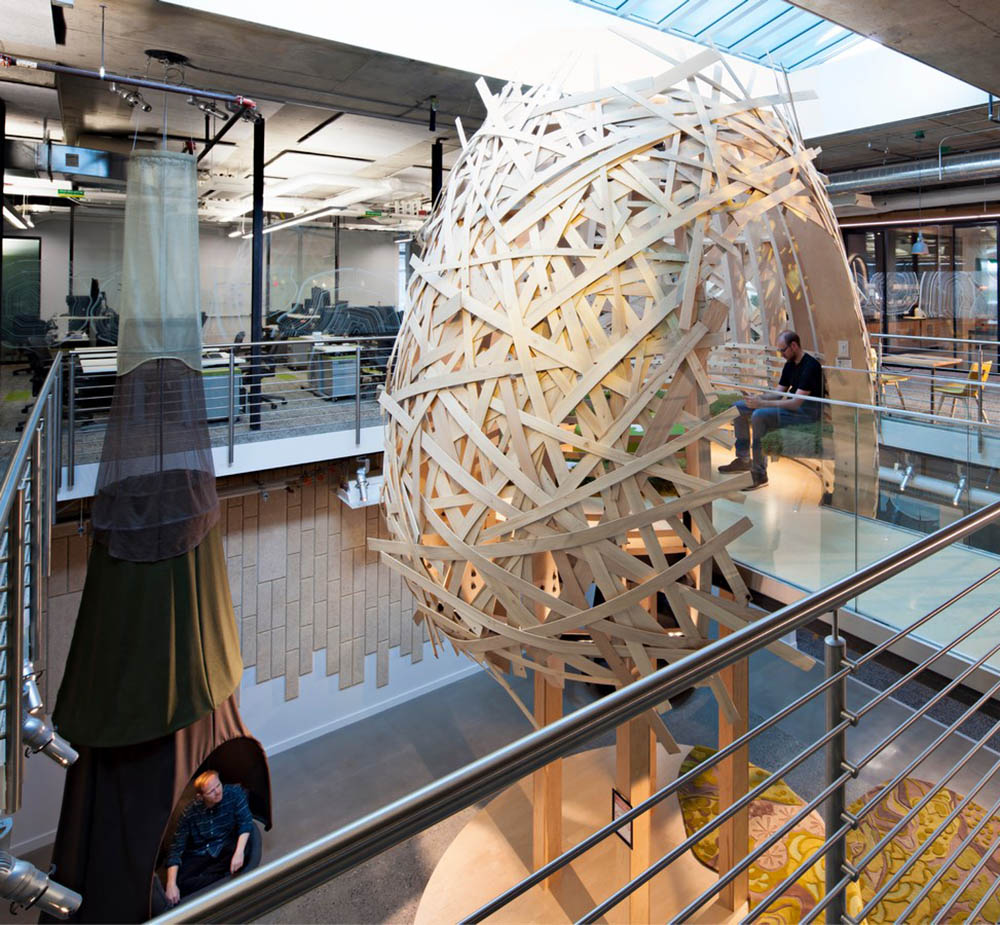
RTF Sustainability Awards 2017 hosted by RTF with the idea of acknowledging the works of professionals and students across the globe in architecture and design field. RTF Sustainability Awards are an all exclusive design awards, analysing and comparing the works of architects and designers across the globe. Aecom, Henning Larsen Architects, Mecanoo and DLR Group are among winners for the 2017 RTF Sustainability Awards.
RTF Sustainable Awards aims to bring out the most creative and innovative projects designed to develop an architectural language that would ‘sustain’ and ‘survive’ the impacts of new age challenges, and evolve into an architectural language of the future – taking sustainability one step ahead.
The categories are largely divided into 3 groups: Architecture, Interior Design and Product Design. All the categories are further divided into Concept and Built.
See all the winners from each category below:
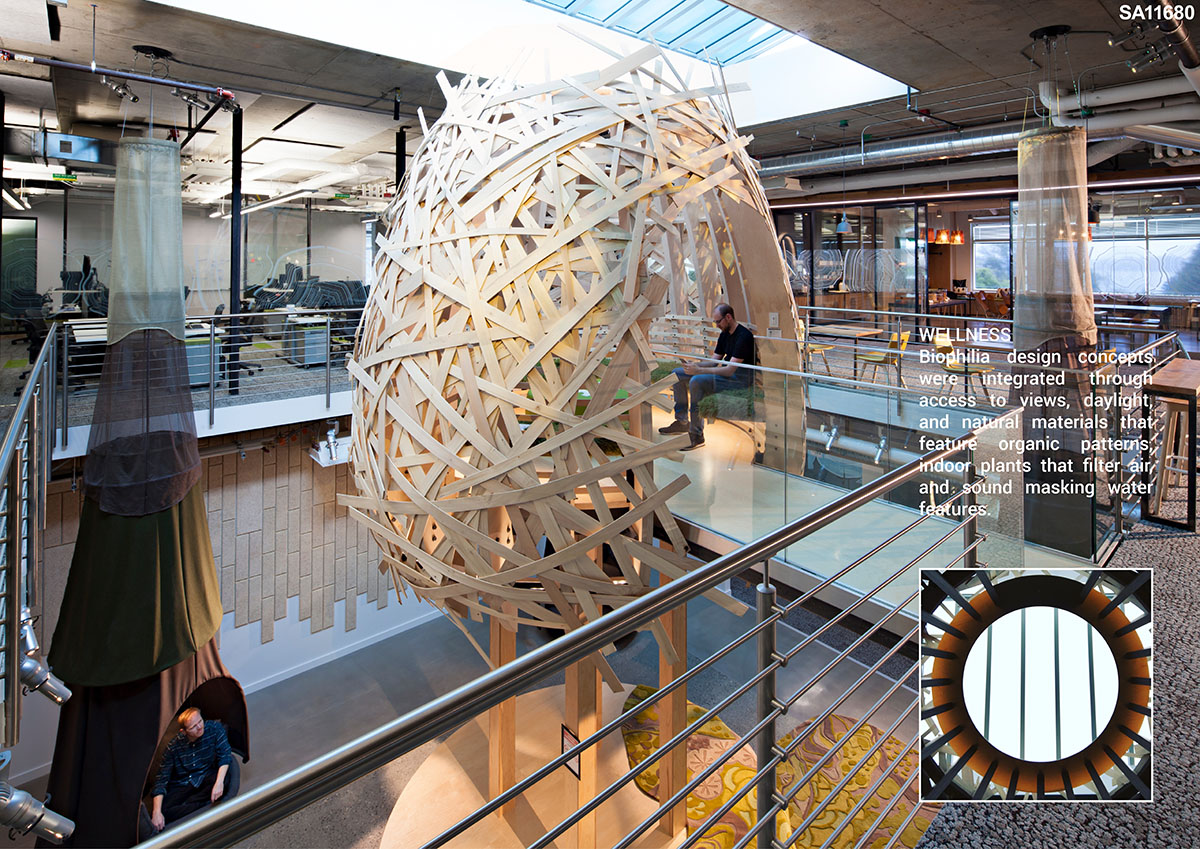
1st Award | Commercial (Built)
Project: 451 7th Avenue by DLR Group
Google’s campus expansion in Kirkland, Washington focuses on environmental stewardship, health and well- being, and user experience to achieve a high-performance building design. Read more from the competition's website.
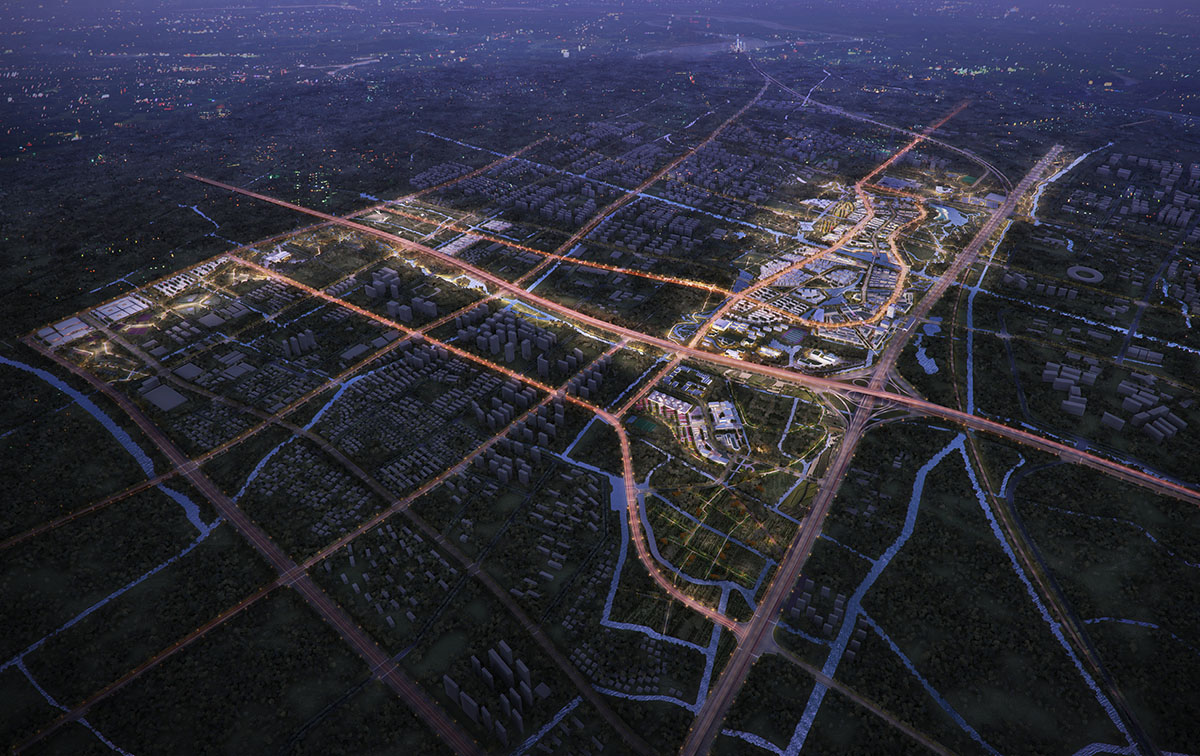
1st Award | Cultural (Built)
Project: Beicai Forest Park by Aecom
Slated as one of eight “green wedges” for the city of Shanghai’s 2040 Greenbelt Vision, the 2,600 acre Beicai Forest Park looks to reimagine the concept of a park. Deemed as a global city, Shanghai will deliver a park that is self-sustaining and a provider for the city’s future demands. Read more from the competition's website.
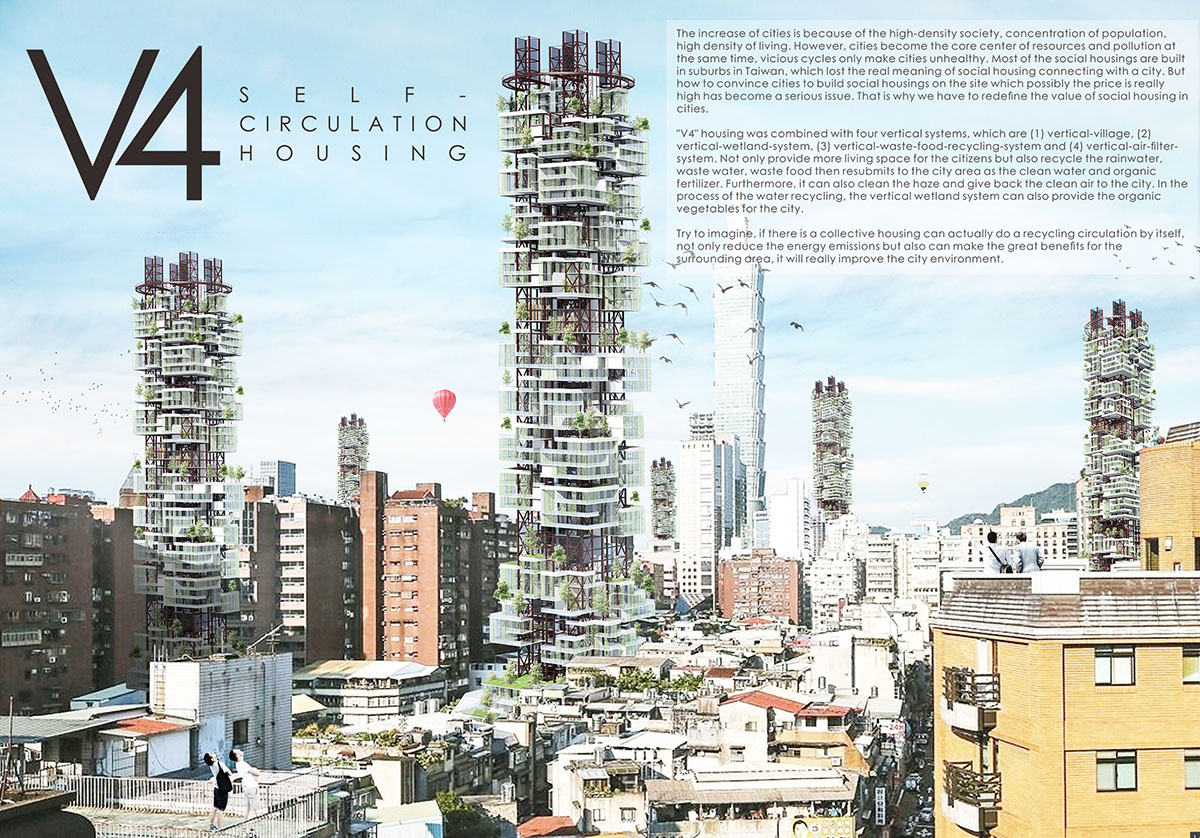
1st Award | Housing
Project: V4, Self-Circulation Housing by Tai Yuan Huang
The increase of cities is because of the high-density society, concentration of population, high density of living. However, cities become the core center of resources and pollution at the same time, vicious cycles only make cities unhealthy. Read more from the competition's website.
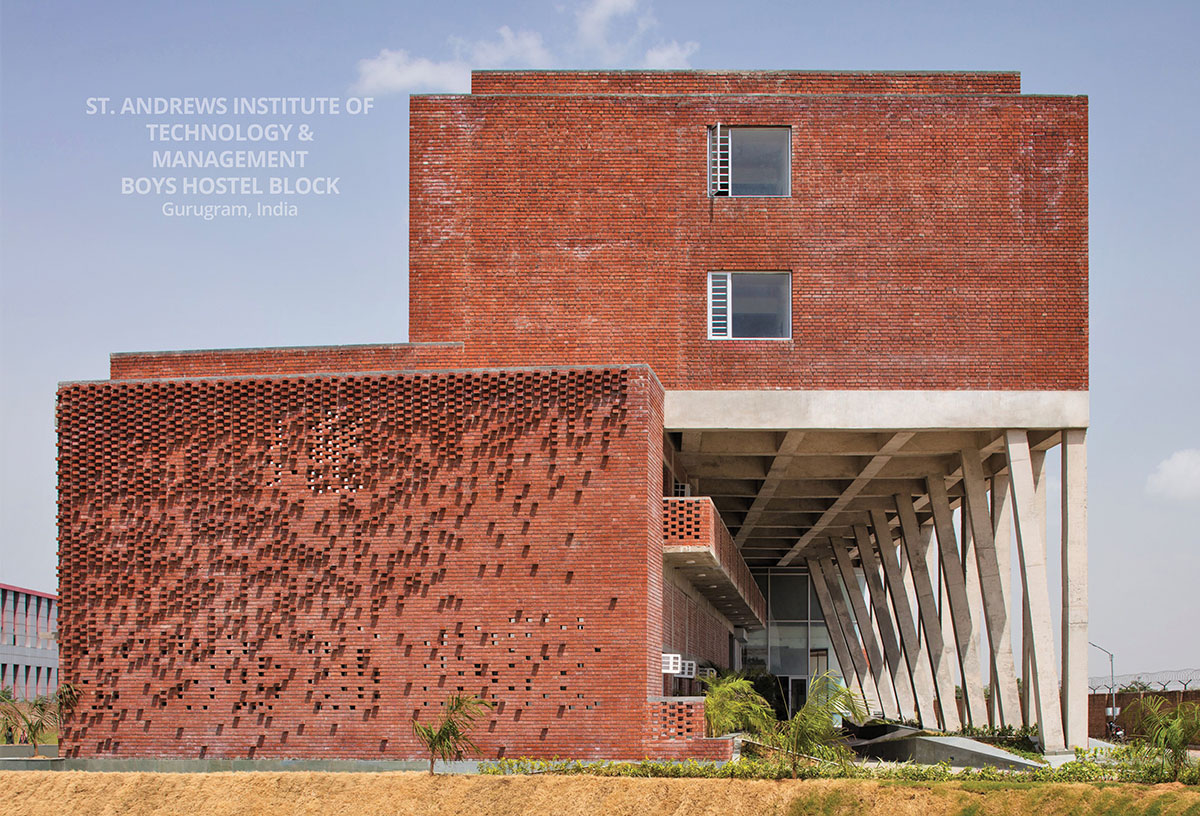
1st Award | Housing (Built)
Project: St. Andrews Institute of Technology and Management by Zero Energy Design Lab
The boys’ hostel was proposed as a linear built mass, in the existing master plan of the institute which posed challenges to create socially active and environmentally sustainable spaces. The linear block was twisted to accommodate a shaded entrance ramp (transitional space/summer court) and an open terrace (winter court) on south and north facades, respectively. Read more from the competition's website.
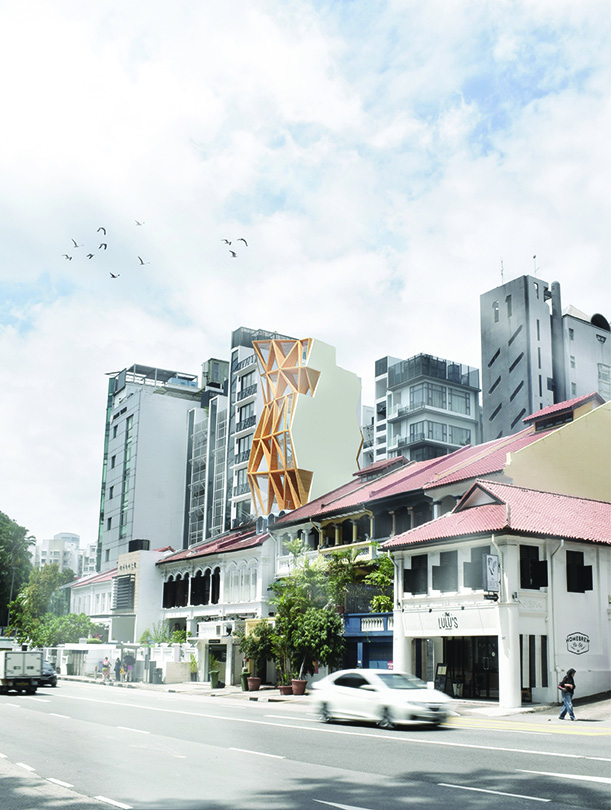
1st Award | Housing (Concept)
Project: Micro-towers reinventing wood by Innovative Form + Construction Intelligence SUTD
The design study responds to the challenge of RETHINKING THE FUTURE by focusing on wood as a renewable material and on the design of micro-towers in a tropical city in Southeast Asia. Most of the fastest growing cities in the tropics have expanded with massive consumption of concrete, steel and other non- renewable materials. Read more from the competition website.
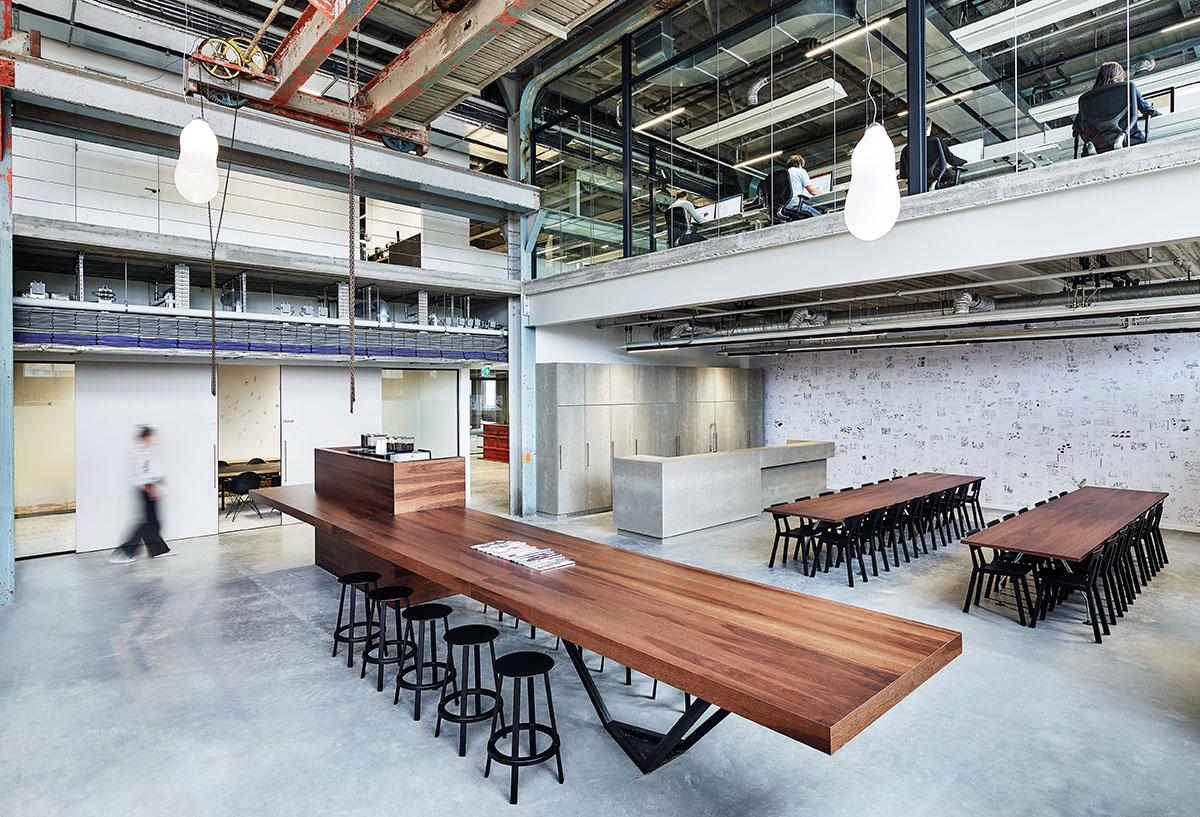
1st Award – Interior – Corporate (Built)
Project: Design agency Van Berlo by Atelier van Berlo
The former power plant of Phillips in Eindhoven has been redeveloped into a multi-tenant office building for the innovative industry. This iconic landmark, that used to fuel the energy for Philips’ factories, now facilitates an open ecosystem to inspire collaboration and innovation. Read more from the competition's website.
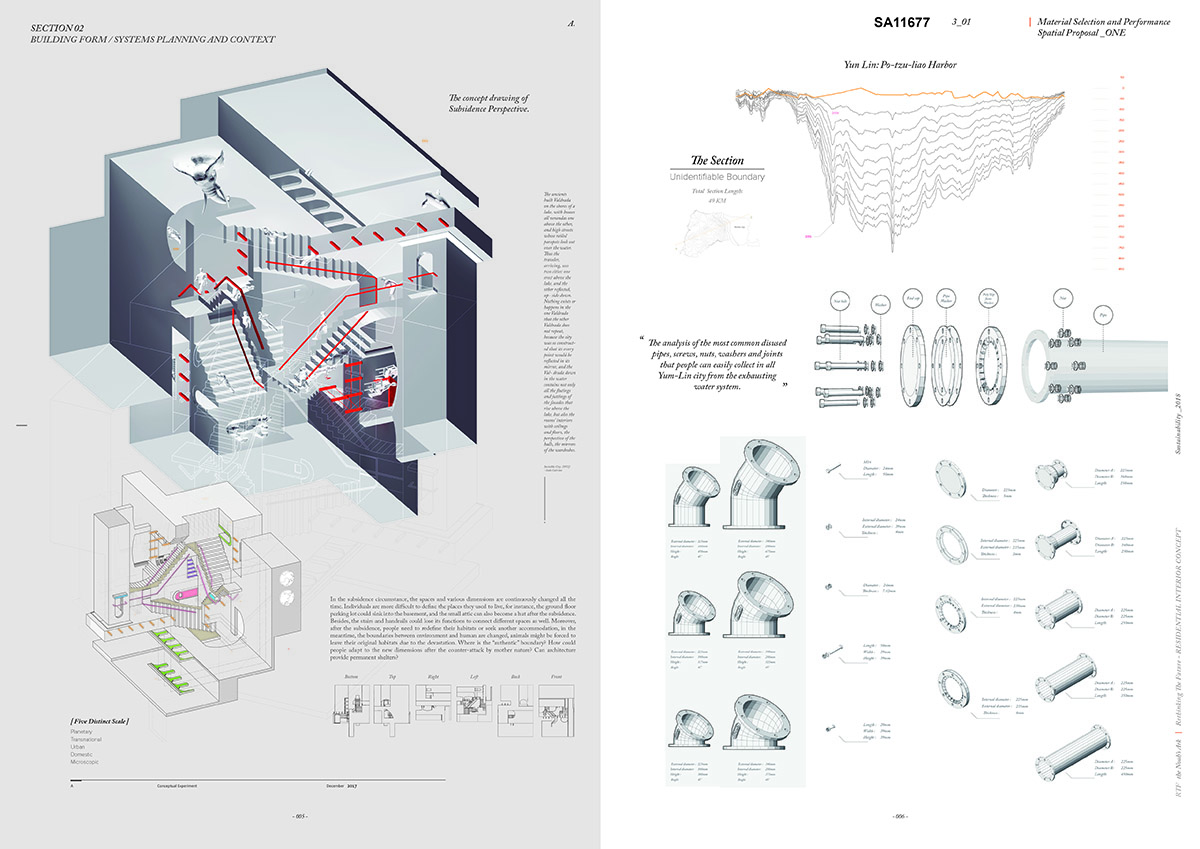
1st Award | Interior – Residence (Built)
Project: the Noah’s Ark by Li-Wei Kuo
The project aims to discover the heartbreaking truth and history via mapping and research. Besides, the specific design especially reusing the thousand tons of disused pipes from the exhausting underground water system could be the most practical solution facing the local sustainability issues. Read more from the competition's website.
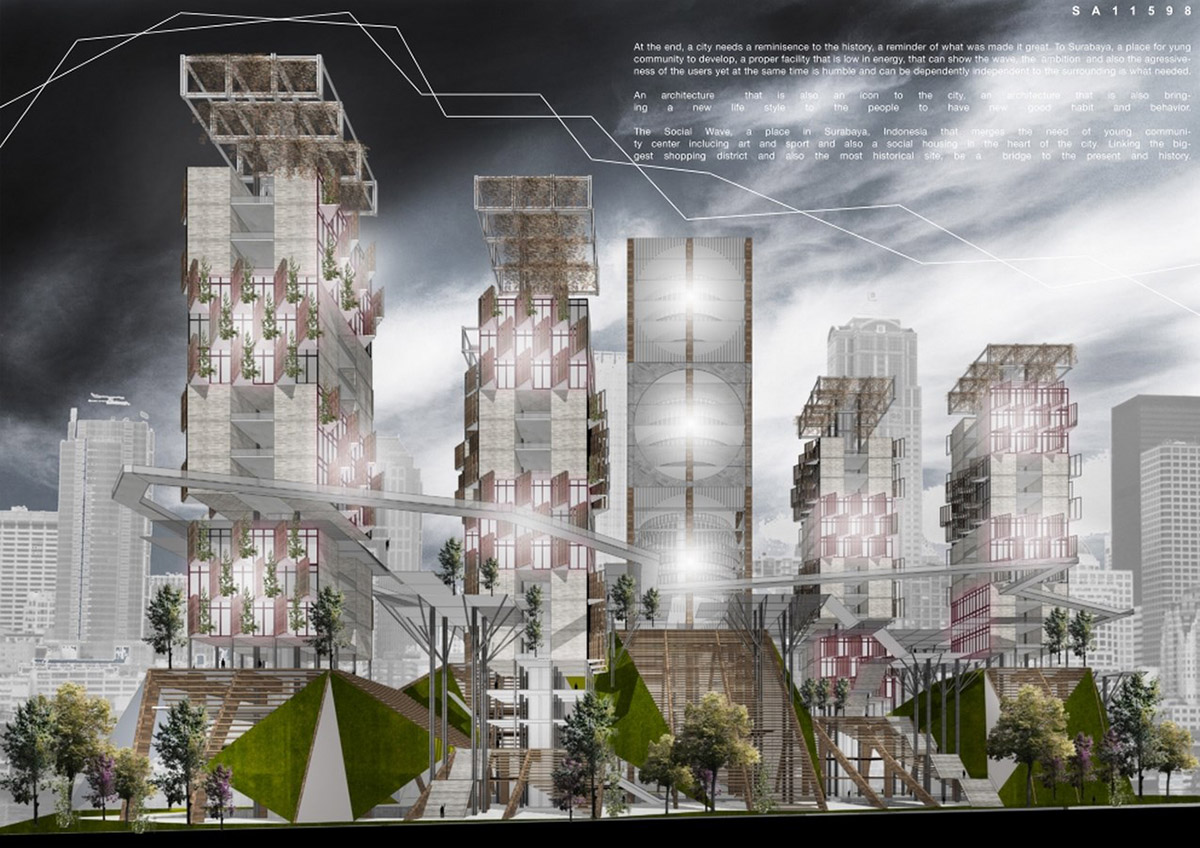
1st Award – Mixed Use
Project- The Social Waves by David Kharisma Putra
Located in the heart Surabaya city which is the second largest city in Indonesia make this building plays a very big role in the sustainability, not only in energy part but also in the social, cultural, and behavior aspect. Also, Surabaya is a heroic city, where young people in history brought a very big impact to the city, so that by that reason, bringing a mix-used building that is not just for commercial use is a need, to facilitate mostly young community and enhance their lives and creativity. Read more from the competition's website.

1st Award – Office Building (Concept)
Project- BCDA office tower by CAZA
Design a headquarters tower for the most important urban planning agency in the country that makes architecture into a demonstration project for how buildings can become active agents in the formation of new habits for both humans and non-human species thereby creating a place for people to learn about the way their cities can become more sustainable. Read more from the competition's website.
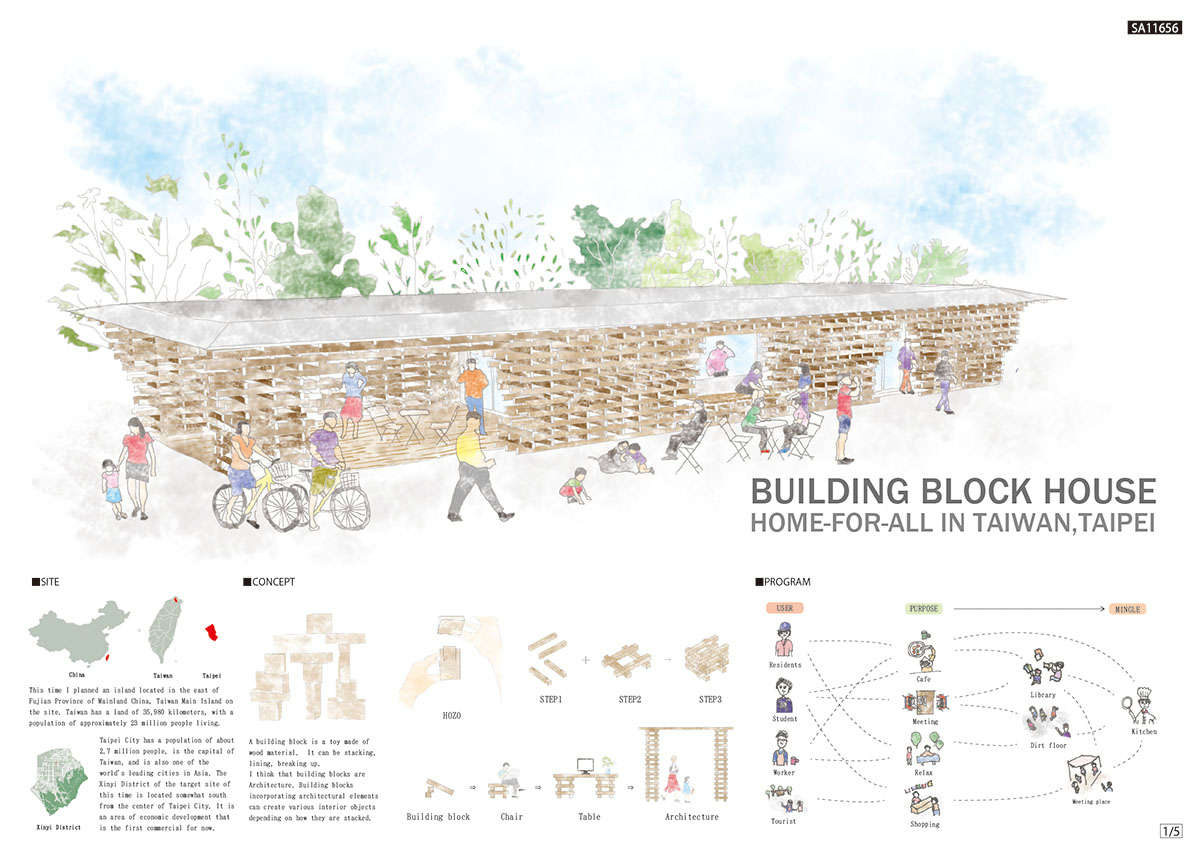
1st Award – Pop-Ups & Temporary (Concept)
Project- Building block house by Yamamoto Taiki
This time I planned an island located in the east of Fujian Province of Mainland China, Taiwan Main Island on the site. Taiwan has a land of 35,980 kilometers, with a population of approximately 23 million people living. Taipei City has a population of about 2.7 million people, is the capital of Taiwan, and is also one of the world’s leading cities in Asia. The Xinyi District of the target site of this time is located somewhat south from the center of Taipei City. Read more from the competition's website.
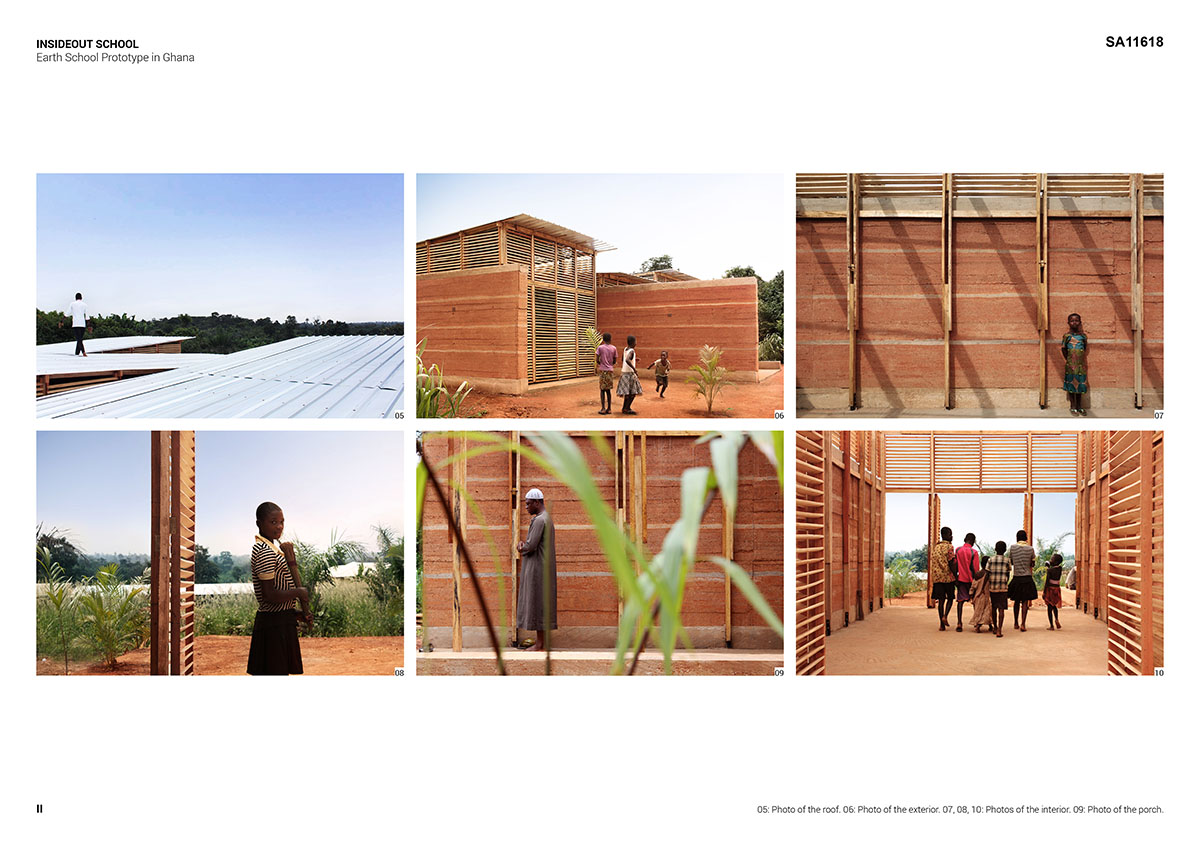
1st Award – Public Building (Built)
Project- InsideOut School by Andrea Tabocchini & Francesca Vittorini
InsideOut is a school prototype built in Yeboahkrom, a rural village in Ghana where the wind had destroyed the only school of the area. This non-profit project won several international awards and was constructed in 60 days with just 12,000 euro, together with the local population and a group of volunteers from 20 different countries. Read more from the competition's website.
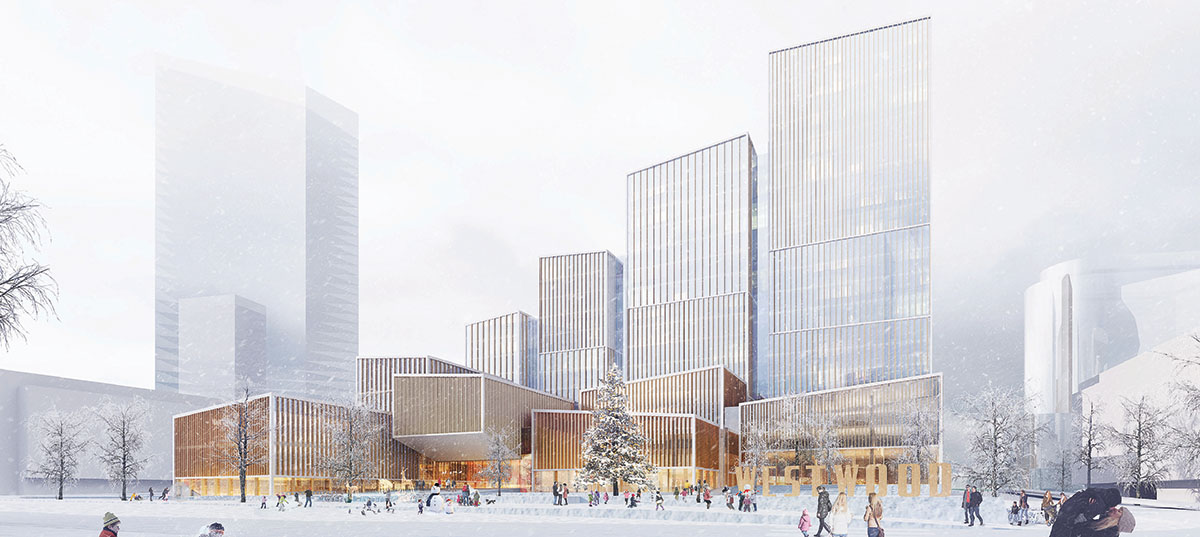
1st Award – Public Building (Concept)
Project-Etobicoke Civic Center by Henning Larsen & Adamson Associates Architects (USA)
The Design Brief for the new civic center of Etobicoke, Toronto, is based on four guiding principles that represent the overall qualities that the Centre should embody in the future. Read more from the competition's website. Read more from the competition's website.
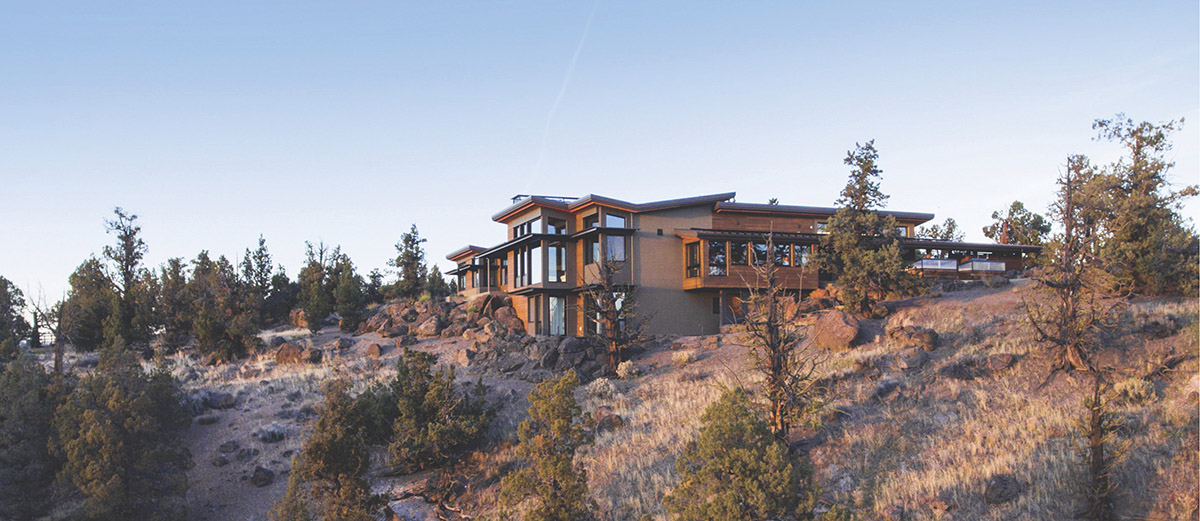
1st Award – Residence (Built)
Project- Live Edge by Nathan Good Architects
Nestled into a bluff above the scenic Deschutes River in Central Oregon sits the LEED for Homes Platinum- Certified Live Edge residence, which combines a modern design aesthetic with an intricate molding to the terrain. The home utilizes extensive exterior terraces for outdoor living and is complete with an attached green house. The home was designed to weave around rock outcroppings and ragged juniper trees in the arid open- range environment. Read more from the competition's website.
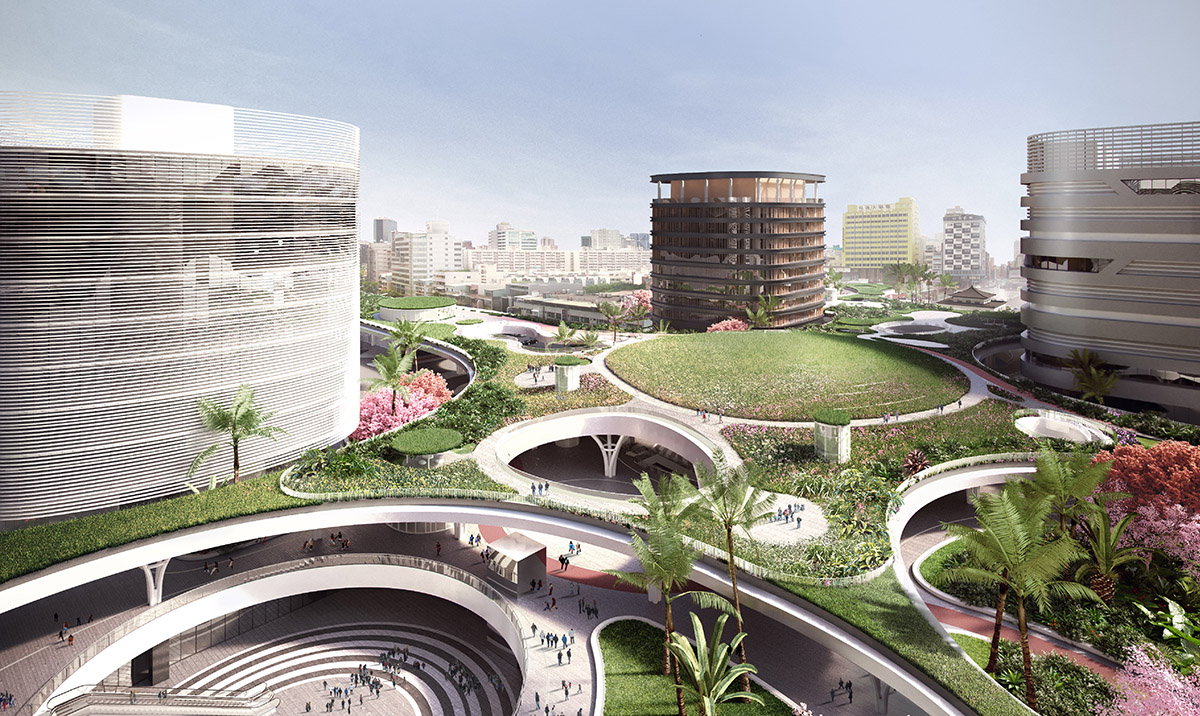
1st Award – Transportation (Concept)
Project- Kaohsiung Station, Kaohsiung, Taiwan by Mecanoo architecten
The new Kaohsiung Station is the crowning achievement of the massive Kaohsiung Metropolitan Area Underground Railway Project, which includes seven subterranean stations along a 9.75 km railway tunnel. It will be a true transportation hub integrating train, metro, local and intercity bus services, taxi and bicycle. As a key project for the city’s transformation, the above-ground station has been designed to add valuable public green space and activate the local community. Read more from the competition's website.
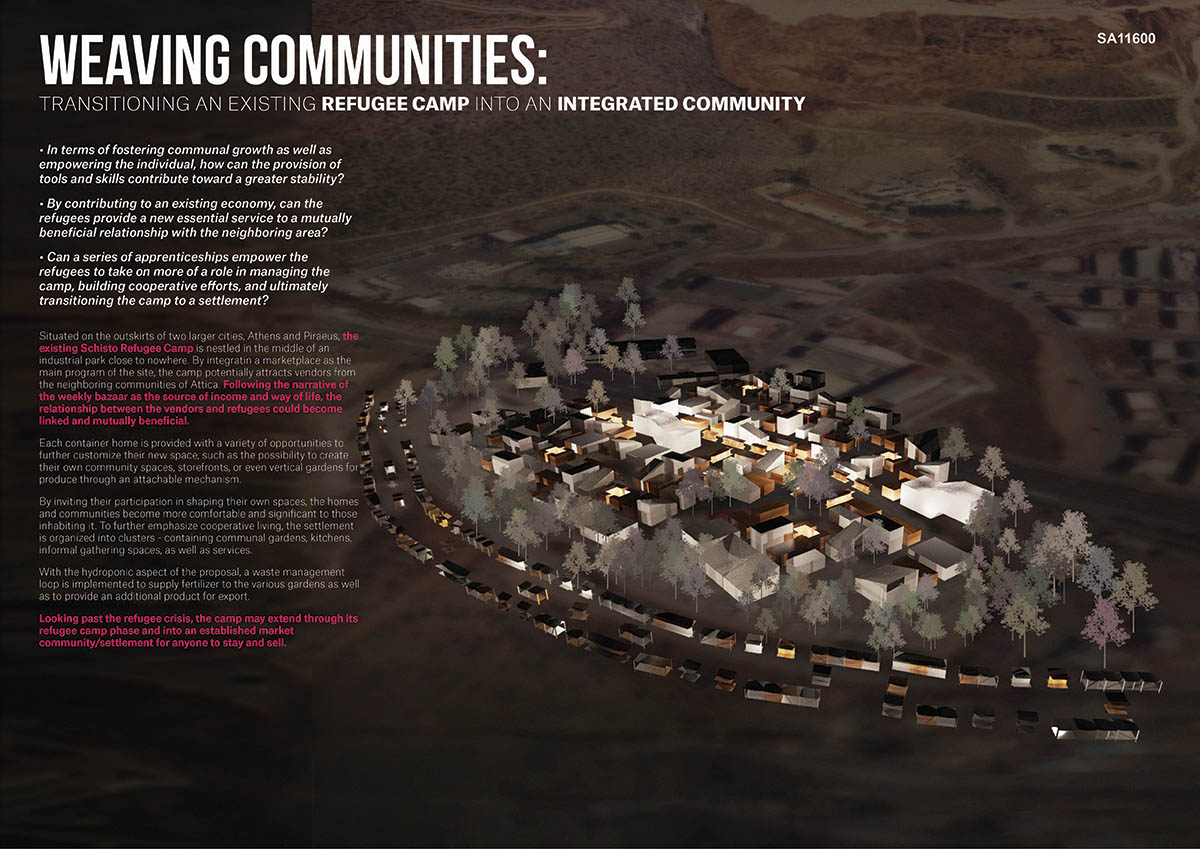
1st Award – Urban Design
Project- Weaving Communities
A Bazaar Weekend by Samantha OngSituated on the outskirts of two larger cities, Athens and Piraeus, the existing Schisto Refugee Camp is nestled in the middle of an industrial park close to nowhere. By integrating a marketplace as the main program of the site, the camp potentially attracts vendors from the neighboring communities of Attica. Following the narrative of the weekly bazaar as the source of income and way of life, the relationship between the vendors and refugees could become linked and mutually beneficial. Read more from the competition's website.
World Architecture Community is media partner for RTF Sustainability Awards.
All images courtesy of RTF Sustainability Awards
> via Re-Thinking The Future
